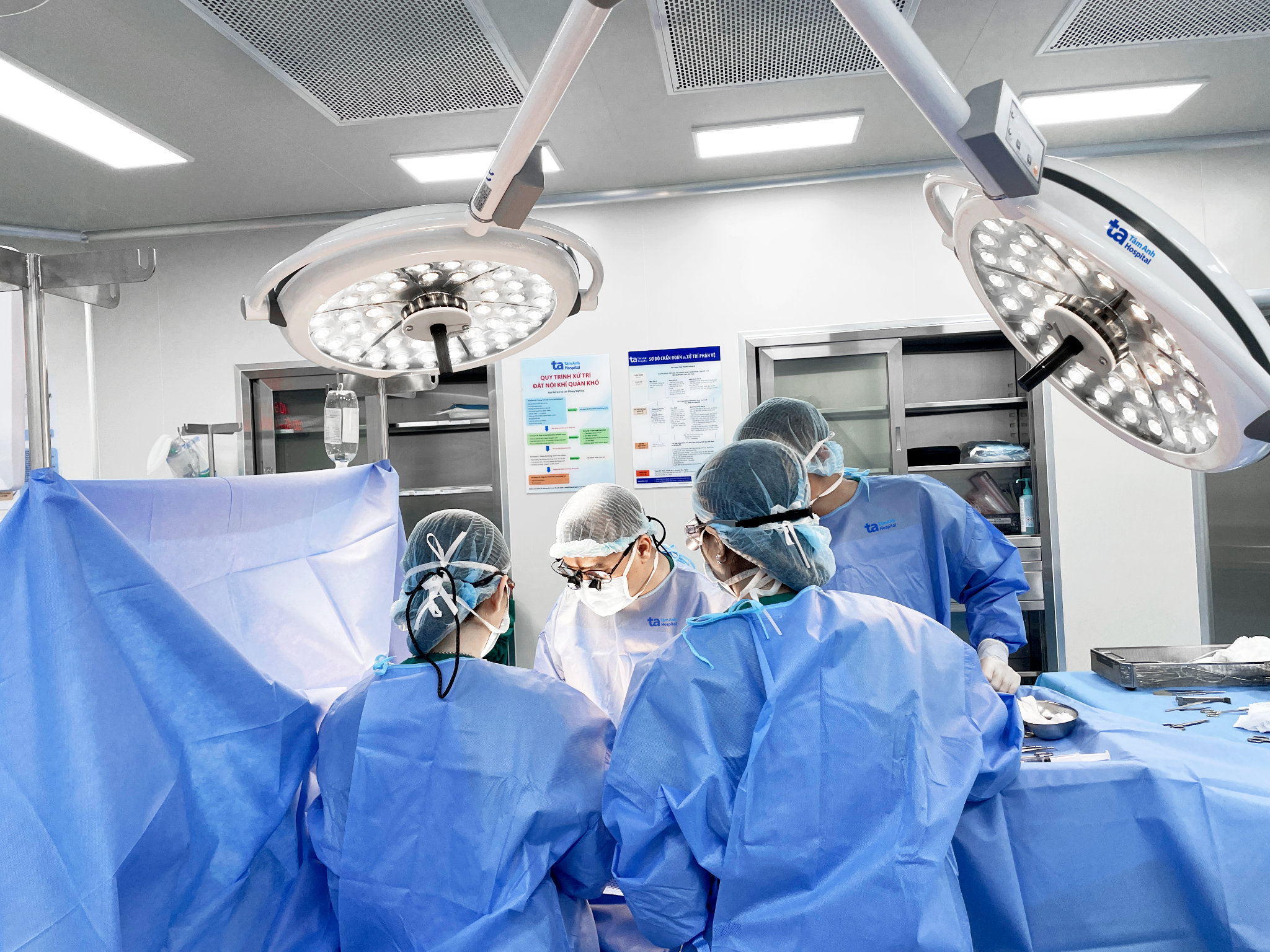Dr. Nguyen Do Trong, a pediatric surgeon, explained that the boy had a Bochdalek hernia, a rare type of congenital diaphragmatic hernia where a thin sac of tissue protrudes through the diaphragm. The more common type of congenital diaphragmatic hernia, a Morgagni hernia, involves organs directly pressing on the lungs, causing damage.
The condition was detected during a prenatal ultrasound at Tam Anh General Hospital in Ho Chi Minh City when the mother was 30 weeks pregnant. The ultrasound showed the fetus's intestines and stomach positioned higher than the left chest, indicating abdominal organs had moved into the chest cavity. Doctors diagnosed the fetus with a congenital diaphragmatic hernia.
Dr. Trong explained that the herniated diaphragm can compress the lungs, causing pulmonary hypoplasia (underdeveloped lungs) and pulmonary hypertension. These are two leading causes of death in newborns with this condition. Doctors planned to monitor and treat the baby after birth, scheduling surgery at 39 weeks. A surgical team was on standby in the operating room to provide respiratory support immediately after birth. The newborn was then transferred to the neonatal intensive care unit (NICU) for oxygen and intubation to stabilize breathing.
According to Dr. Trong, the timing of the surgery is crucial. Incorrect timing can cause respiratory failure and prolonged ventilator dependence. Delaying surgery risks strangulation of the herniated organs, leading to bowel necrosis and short bowel syndrome, which permanently affects nutrient absorption. Digestive fluids and stool can also leak into the chest and abdominal cavity, causing peritonitis and pleural empyema.
Doctors decided to operate 48 hours after birth. They identified the herniated organs (intestines, stomach) and repositioned them in the abdomen. After surgery, the baby received specialized care in the NICU with respiratory support and was discharged after 7 days.
 |
Dr. Trong (center) performing the surgery. Photo: *Tam Anh General Hospital* |
The diaphragm separates the chest and abdominal cavities. A hernia creates a hole, allowing abdominal organs (stomach, intestines, liver) to move into the chest. This compression prevents normal lung development and causes pulmonary hypertension. The exact cause is unknown, but genetic and environmental factors are suspected. Some cases are associated with other congenital disabilities, such as heart defects or chromosomal abnormalities.
Most congenital diaphragmatic hernias are detected during routine prenatal ultrasounds (usually between 18 and 20 weeks of pregnancy). Even after successful surgery, children may face health issues later in life, such as asthma, respiratory infections, gastroesophageal reflux, slow weight gain, and developmental delays. Dr. Trong recommends regular checkups and ultrasounds for pregnant women to detect diaphragmatic hernias and other congenital disabilities early.
Dinh Lam
*The patient's name has been changed.
| Readers can submit questions about children's health here for doctors to answer. |












